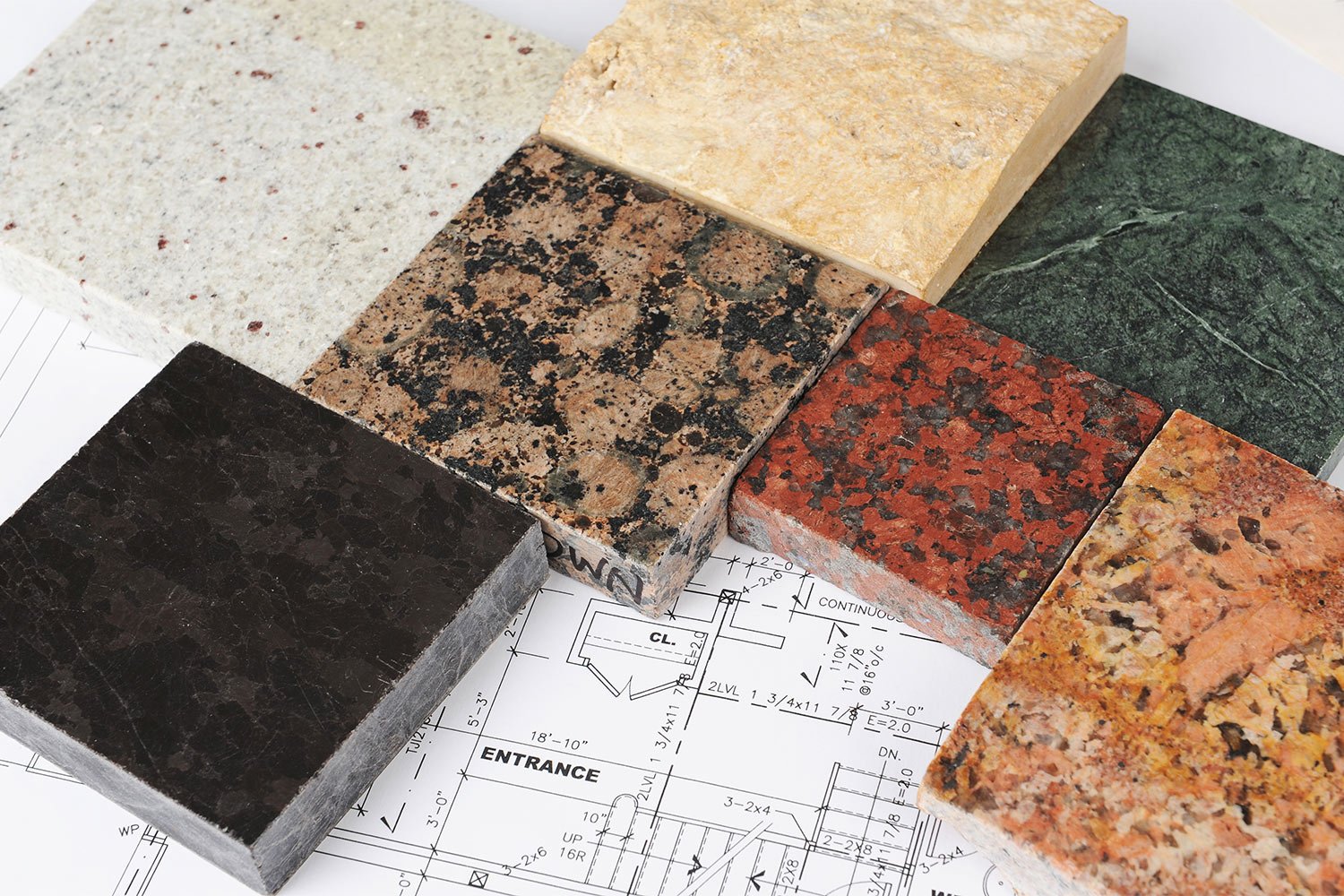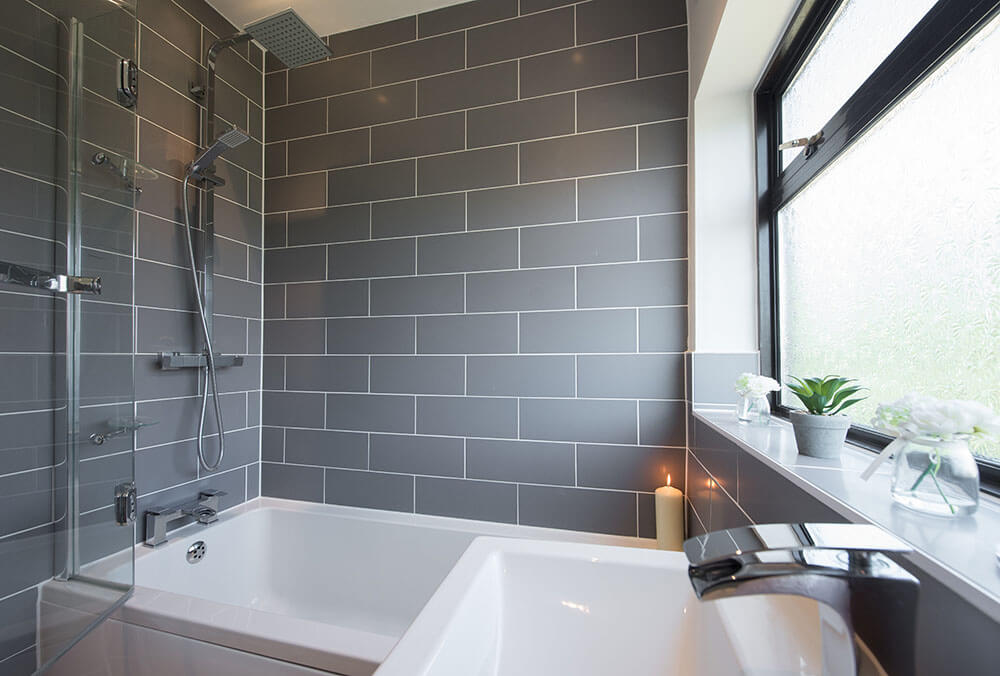
Are you getting close to deciding on Caesarstone® countertops for your home? Discover all the details behind Caesarstone® countertop costs in this guide.
Eco-friendly granite remnants may be perfect for your small- to medium-sized project


When a manufacturer cuts a counter out of a large slab, granite remnants are the leftover pieces.
These pieces are ideal for smaller projects like a backsplash, kitchen island counter, or bathroom counter and vanity.
Granite remnants average $10 to $35 per square foot from slab yards, fabricators, and suppliers.
While you’ll likely save on materials, you may pay more in labor for cutting, sealing, and edges.
For those making home improvements, few materials are more desirable than granite. Dense, durable, and elegant, it can bring refinement to a kitchen or bathroom without a lot of fussy upkeep.
As you’ve browsed local stone countertop companies, dreaming up your next big kitchen project, you’ve probably come across references to granite remnants. Though it may be obvious from the term that we’re talking about leftovers of some kind, questions remain. Remnants of what? What are its applications?
When a stone manufacturer receives an order for a granite countertop or tiling, they cut a large slab of granite to the required specifications before polishing and finishing it. The small- to medium-sized pieces left over are called granite remnants. Purveyors of granite make remnants available to consumers at a price lower than the cost of solid slab.
While solid slab granite costs an average of $40 to $60 per square foot (and rare colors and patterns can be as much as $100 per square foot), granite remnants cost about $10 to $35 per square foot. Remnant pieces are no less durable than a solid slab, meaning you get the same quality material at a fraction of the price.
It would be a mistake, though, to regard these pieces of granite as salvage, as some do. The creation of remnants is an unavoidable part of the granite fabrication process, and many large-scale manufacturers design their mass-market models to maximize efficiency so that they produce both the slabs and the remnants in ideal shapes and volumes.
It’s also worth noting that remnants are not the only type of granite leftovers available on the market. Many purveyors distinguish between a remnant, a granite orphan—a remnant that stands as the only remaining piece of its kind—and a partial slab, a term that some dealers use only in reference to quartz (but which others, confusingly, use interchangeably with “remnant”).

When it comes to the high quality associated with the stone, there is no difference between solid slab and scrap granite. When you’re wondering whether or not you might opt for lower-cost granite remnants, the real question is size.
Small- and medium-sized granite remnants are perfect for small- and medium-sized projects, but they are no substitute where large slabs are required, such as a kitchen remodel. Though it’s possible to seam them together, it’s often difficult to find enough countertop remnants of the same color and pattern.
If you want to create some contrast in your existing granite kitchen or bathroom—or add a granite accent to a room with different types of stone counters—granite remnants might offer the perfect solution. For the kitchen, you might find a perfect remnant for that kitchen island countertop or a striking backsplash. In the bathroom, smaller counters, vanities, and shower seats are other possibilities.
Remnants can also provide an excellent opportunity to bring granite into rooms other than the kitchen or the bathroom. It can be great for a bedside or coffee table, for example. You can also incorporate it into fireplace mantels or windowsills.
Beyond the more traditional applications, remnants’ affordability and sometimes unusual sizing create opportunities to use granite in new, creative ways. The options are endless, but some possibilities include:
Shelves
Coasters
Cheeseboards and other kinds of serving trays
Patio pavers
Lamp bases
Cutting boards
Outdoor benches
Let’s take a closer look at some of the pros of using granite remnants in your remodeling project.
The primary reason to opt for granite remnants over solid slab is the significantly lower price. You can find granite remnants for about $10 to $35 per square foot, in comparison to the price of solid slab granite at around $40 to $60 per square foot.
Keep in mind, though, that remnant granite is still more expensive than granite tile—so if you’re working on a project for which tiles may be appropriate, that could be the most affordable option.
In addition to being easier on your pocketbook, using remnant granite is also easier on the earth. Though granite is naturally abundant, the process of quarrying it and transporting it to market is highly energy-intensive. Using a remnant for a small project like a backsplash means that you’re not producing additional waste by cutting another slab that will leave its own remnants and contribute to overall demand—and that’s in addition to the benefits already accrued by recycling material that may otherwise go unused.
For many types of smaller projects, remnant granite isn’t just a cost-effective workaround but is actually better suited for the job. If you’re adding a small countertop to a kitchen island, it won’t make sense to cut down a large slab when smaller granite pieces are available, even if money were no object.
Before making your final decision, let’s review some of the cons of using granite remnants.
Remnants are not, however, a panacea. As discussed above, you cannot substitute them in most jobs that call for a large slab. Using remnants also requires more flexibility in terms of color and pattern than you might otherwise exercise. Although made-to-order slabs are an option, by definition remnants result from choices others made. Only a certain selection of remnants will be available to you at any one place and time, so rather than searching endlessly for a piece that matches that unique countertop idea you saw in your favorite magazine, you’re better off shopping around and drawing inspiration from what’s available.
You should also keep in mind that, depending on the nature of your project, using a remnant may lower the price of materials while raising the cost of labor. While slab prices often include the costs of cutting and sealing granite, a remnant may require additional work at an additional charge if, for example, you need special edges or any other custom templating.
Most slab yards, fabricators, suppliers, and other granite slab dealers usually carry a selection of remnants. Some of them even feature remnant showrooms. Before hitting the stores, develop a sense of the size of the remnant you’re looking for as well as your budget so as not to become overwhelmed with the choices. If you’re not sure where to begin, discuss your project with a local granite countertop installer, local bathroom remodeler, or the appropriate professional to get some guidance.
Granite remnants offer two key advantages over traditional granite: They’re cost-effective, and they’re perfect for smaller projects in tight spaces.
Granite remnants offer the same durability as full slabs but with smaller sizing options. This means they're great for bathroom counters, bars, and shelving. They’re also great for unique projects like cutting boards and coasters. These remnants can withstand the elements, so they’re a good option for outdoor builds like fire pits.
Logan did an excellent job repairing and painting my deck. He also did a great job trimming and clearing the shrubs and bushes around my house.
It was completed and well done!
We are so happy with this company, the owner, and her staff. They were professional and wonderful to work with, from the explanation of the process to completing the job. They worked closely with our insurance carrier. They went above and beyond our expectations, and we would highly recommend...
Guys were professional and care about how they work, and how their work comes out. Recommend!!
Crossfield was very helpful and professional in helping me choose the best furnace for my home. They had been servicing my last furnace for years. I chose a furnace and signed a contract to have the new furnace installed on February 6th, 2025. I was visiting my mother in Florida when I...
Charlie and his crew were easy to work with and very efficient and professional. He adapted easily to the changes in our electrical needs and had a great attention to detail. He was a great partner in executing our vision. My wife and I would highly recommend him for any of your electrical...
Excellent customer service! Did an amazing job and I will use them again. Caleb is very responsive and knows the business well. .Easy to work with and responsive when I call. I highly recommend Grassbusters for all of your lawn care needs.
The service technician, Sam, came and found the problem, and promptly fixed it. He is very knowledgeable and works quickly. I would recommend him to anyone. Thank you, Sam Barb M, Farmington NY
They were incredibly friendly, professional and responsive! They communicated with me multiple times and I always knew what was going on every step of the way. Very professional, friendly and got the work done in a timely manner. They definitely know what they are doing!
Hard working and pleasant installers Brian L. & Mark G. did a fabulous job of ripping out our old shower unit and installing a brand new shower with sliding glass doors. What a great difference.
From average costs to expert advice, get all the answers you need to get your job done.

Are you getting close to deciding on Caesarstone® countertops for your home? Discover all the details behind Caesarstone® countertop costs in this guide.

Marble backsplashes are beautiful and costly additions to your kitchen. Our guide lays out marble options and the labor required to install it.

The cost of soapstone countertops varies primarily based on the size of the installation area, the color of the stone, and the type of edging.

Many savvy homeowners ask the question: Do quartz countertops need to be sealed? This guide explains the makeup of quartz and shares what you need to know about sealing.

If you are investing in new kitchen counters, you may wonder if quartz countertops are heat resistant. This guide explains how much heat quartz countertops can take and how to protect them.

Who to hire for stone tile and marble installation? Learn which pros handle the work, what they do, and how to compare your options. Start here.